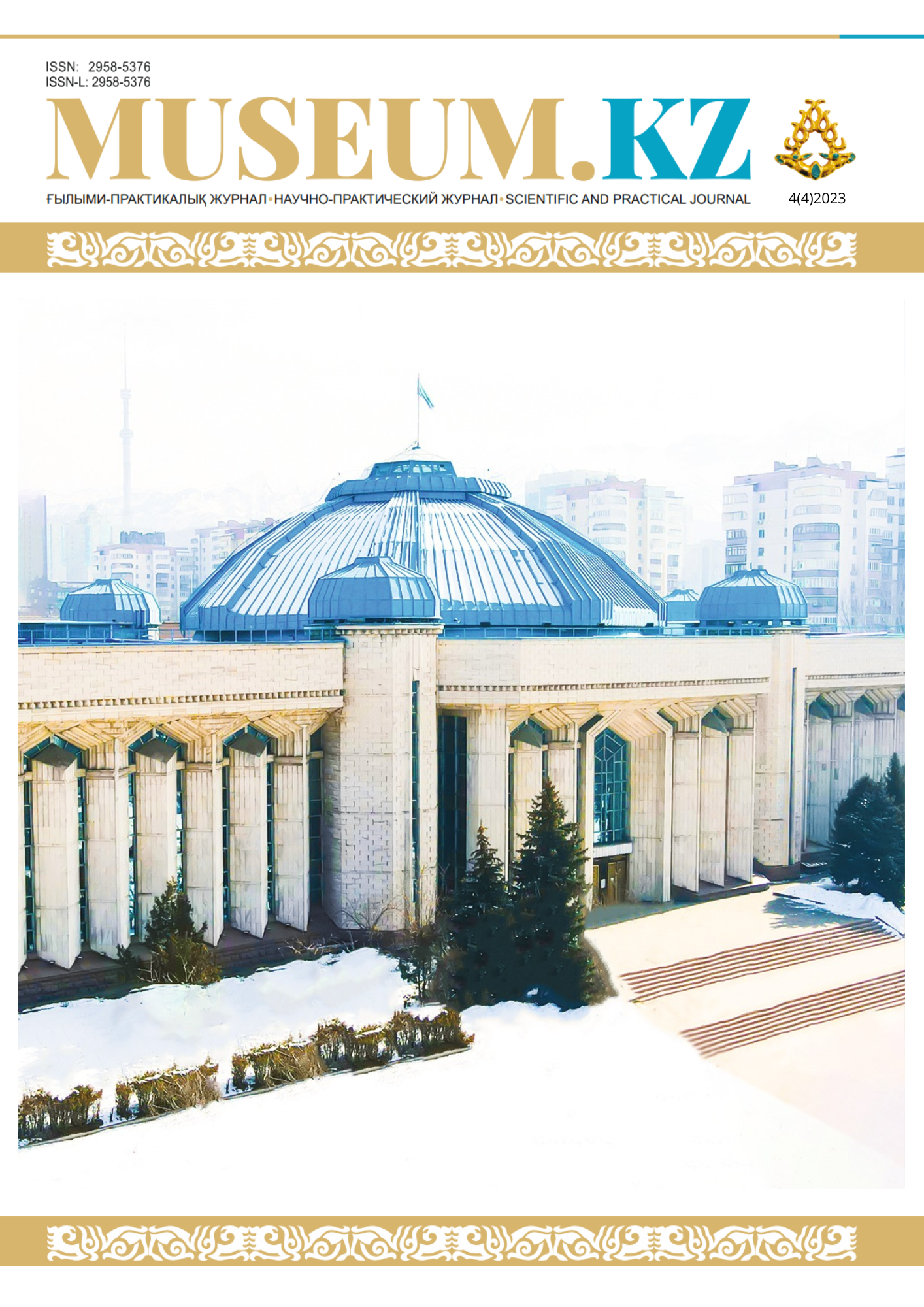ABOUT THE TRANSFORMATION OF THE TRADITIONAL ECONOMY OF THE KAZAKHS IN THE SECOND HALF OF THE XX – EARLY XX CENTURIES (BASED ON MATERIALS OF AKMOLINSK REGION)
DOI:
https://doi.org/10.59103/muzkz.2023.04.05Keywords:
traditional Kazakh economy, nomadism, nomadic economy, nomadic cattle breeding, traditional economic-cultural typeAbstract
One of the topical issues of contemporary ethnological science of Kazakhstan is studying of transformation of the Kazakh traditional economy and culture. In the second half of the XIX – early XX centuries there have been serious changes in the economic activities of the Kazakhs, and the social and property differentiation of Kazakh society has intensified. The colonization of the region, which included a resettlement policy, forced the Kazakhs to adapt to the new conditions of farming.
The history of studying the traditional economy of the Kazakhs – nomadic cattle breeding has more than two hundred years. During this period, the attitude towards nomadism has undergone serious changes and has already received a fair historical assessment. For a long time, the Eurocentric concept prevailed in science, according to which nomadism was opposed to settlement and was presented as an archaic economic and cultural type, and the nomads themselves were barbarians. Now there is no doubt about the great contribution of nomadism to world civilization and that nomadism has its own unique features that cannot be compared with the development of settled societies. Therefore, the problem of transformation of the traditional Kazakh economy acquires a new meaning.
The author of the study applied the historical and genetic method, as well as general scientific methods of analysis and synthesis.
Materials and methods of research: materials of the state archive of the Akmola region, pre-revolutionary and modern periodicals, scientific works of Soviet and modern scientists.
The author applied general scientific methods of analysis and synthesis, followed the principles of historicism, objectivity and scientific approach. The historical and genetic method allowed us to consider the process of transformation of the traditional Kazakh economy and socio-economic relations in Kazakh society. The historical and systematic method made it possible to present the traditional Kazakh economy as a single system, as well as as an important component of the region's economy.







